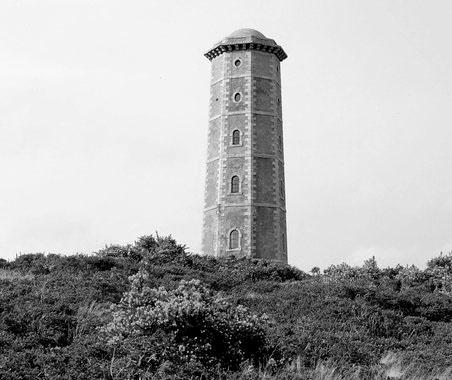
2 minute read
Gerry Butler
We stretched our legs: carrying bags of groceries up to the kitchen at the top; down to the bottom again for the family-sized suitcase; up to the higher bedroom; down to the bottom bedroom the new lighthouse (they’d be summer visitors, then)... a challenge to race to the top in the quickest time (23 seconds was the most believable)... birders claiming sights of fulmars and choughs... a sighting of the headless to put up the cot; up to the living room again for a cup of tea. So far, so fit. The wind howled and whined outside. Windows rattled. The clouds closed in. Dusk fell and, dimly through the gloom, we caught the flashing beam of the new lighthouse by the shore below: three times, count to five, three times again. At least, I think that was what it was doing. It was hard to see. mean, I didn’t expect to see all the way to Dublin or anything, or to enjoy cloudless, starry skies. After all, it was a lighthouse they are put where they are generally because the weather is rough enough to wreck ships on the rocks below. With Eddie bathed and put to bed we had supper then put our feet up. That was when, just before bed, Jane made
I wondered: how can a headless woman whistle? Then it came to me: imagine blowing across the neck of a bottle. Elementary.
Advertisement
2022editorial design typography copy writing
I would be a third generation light keeper.
Irish Lights had five di erent dimensions: they had the navigational side which would have been lighthouses and light ships, they had the steamers which tended the lighthouses and light ships, and they went around landing oil and stores on the rocks. en they had a depot in Dún Laoghaire where they did all the repairs and buoy work, and painters - they had all that in Dún Laoghaire. en they had a main o ce in Pembroke Street in Dublin, and all the administration was carried out from there.
Created as a response to the International Society of Type Designers (ISTD) prompt, “Lighthouses of the World.” e side we were involved in was on the coast, in the lighthouses, and on the light ships. My father was a sailor out of Wexford, as was his father before him, as was his father before him again — that would have been back in the sailing period. And my father’ father went on the light ships — he was a captain aboard the light ships, moving to and from di erent ships. Our father then joined the light ships, because he was in the Merchant Navy. He transferred then from the light ships over to lighthouses. His brother, Amby, had woman’s ghost. Eh? There followed dozens of spooky entries: party of six all swearing to have seen the ghost climbing the stairs; Siobhan, aged six, disappointed at not seeing the ghost; Ellen, nine, sleeping in with her mum so that the ‘white woman’ doesn’t get her; the headless woman topless (nice body); the headless woman whistling at the window... Jane and I looked at each other. Eddie started to wail. Guess whose turn it was to check on him?
The book investigates the lore and history surrounding the Bull Rock Lighthouse, which sits atop an island of the same name on the rugged Irish coastline of the Beara Peninsula. Source material ranges from personal email exchanges to transcribed oral histories and archives, with my own commentary running on bright red half-page inserts placed throughout.
The color red represents the accent brightred railing of the lighthouse and injects a pop of bright, youthful color, whcih was crucial for communicating with my younger target audience. The typeface, GT Sectra, nicely toes the line between modern artful type and old humanistic script, which also serves to bridge the generational gap between the material and the target audience. The jagged and angular edges are also beautifully macabre in the right settings, while also reminiscent of the rugged coastline of Beara and the crags of the Bull Rock itself.










